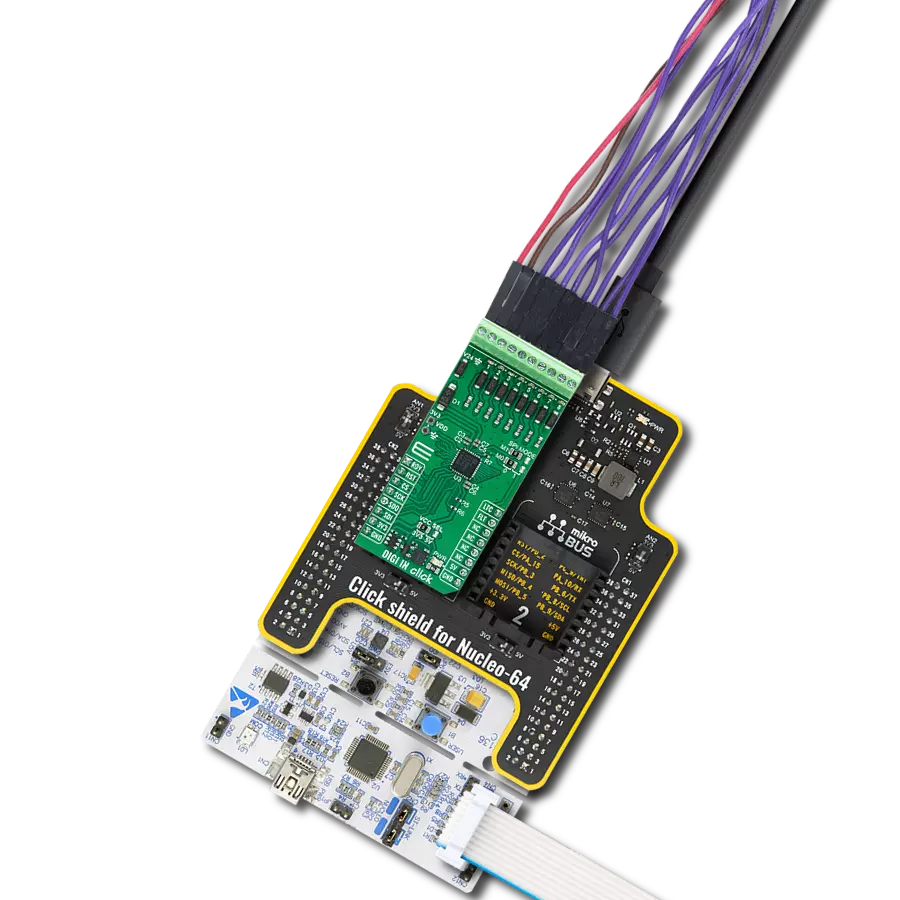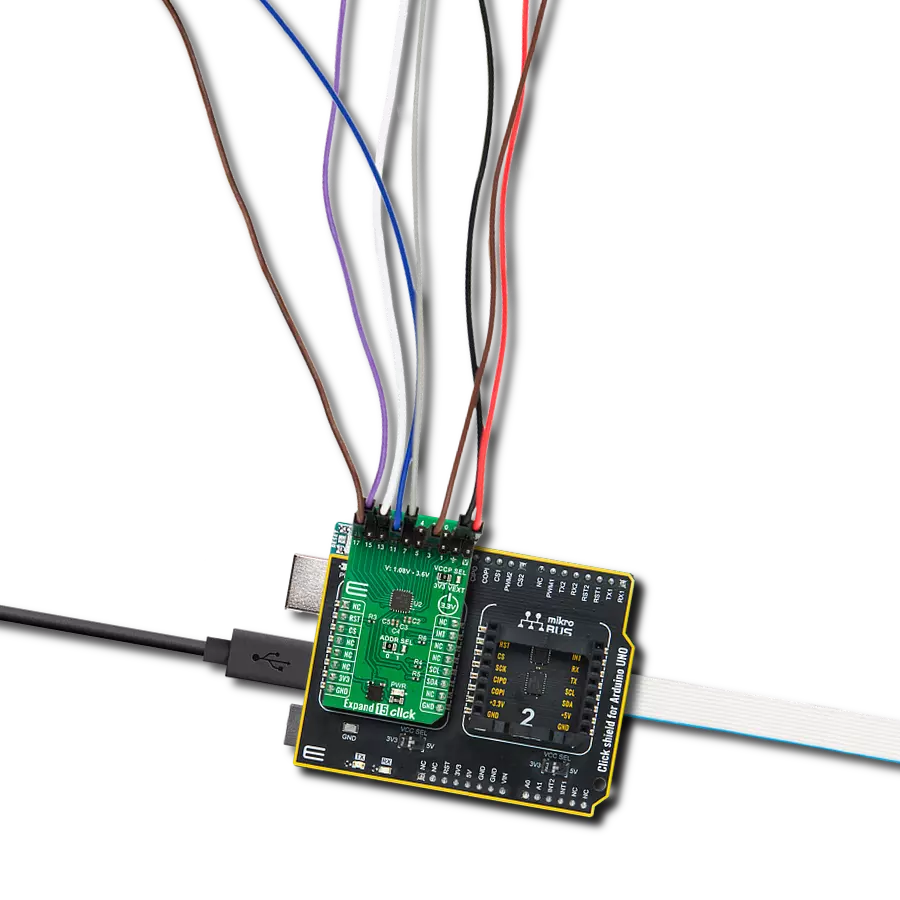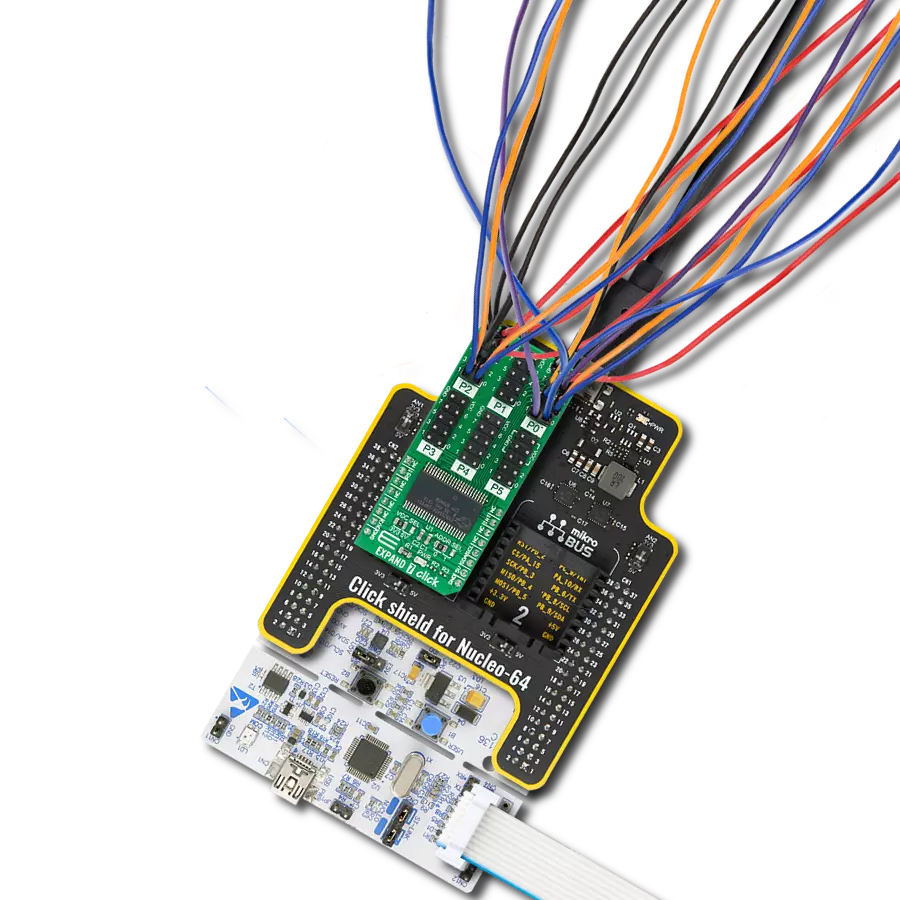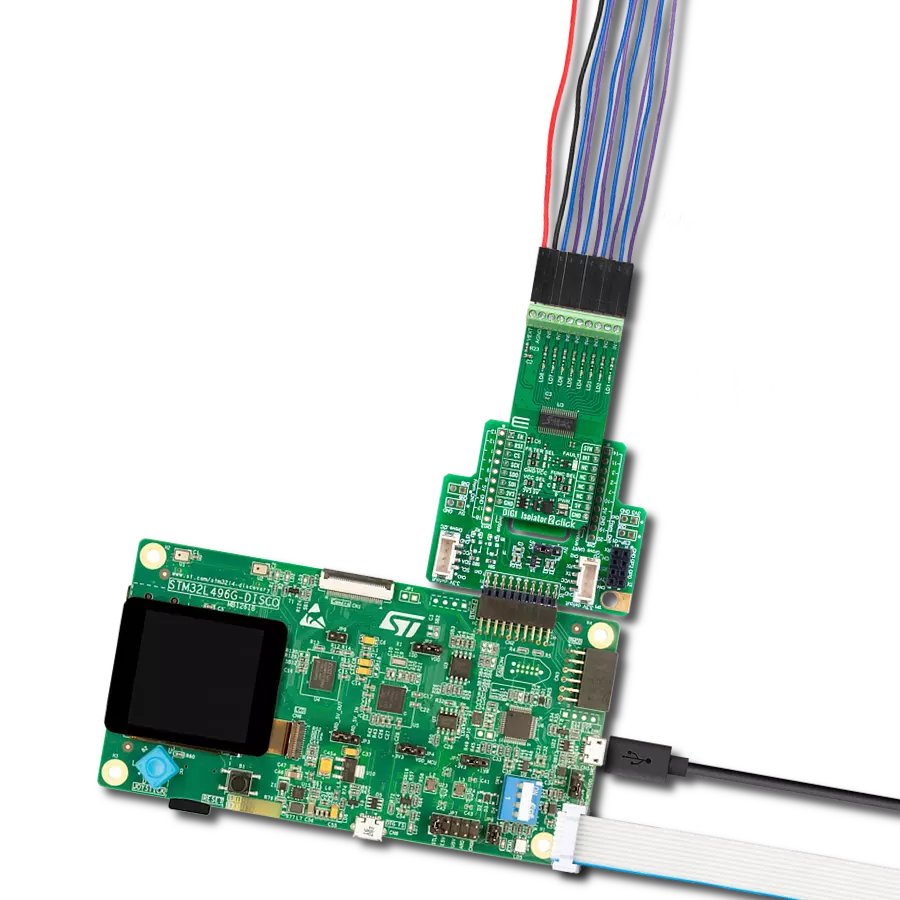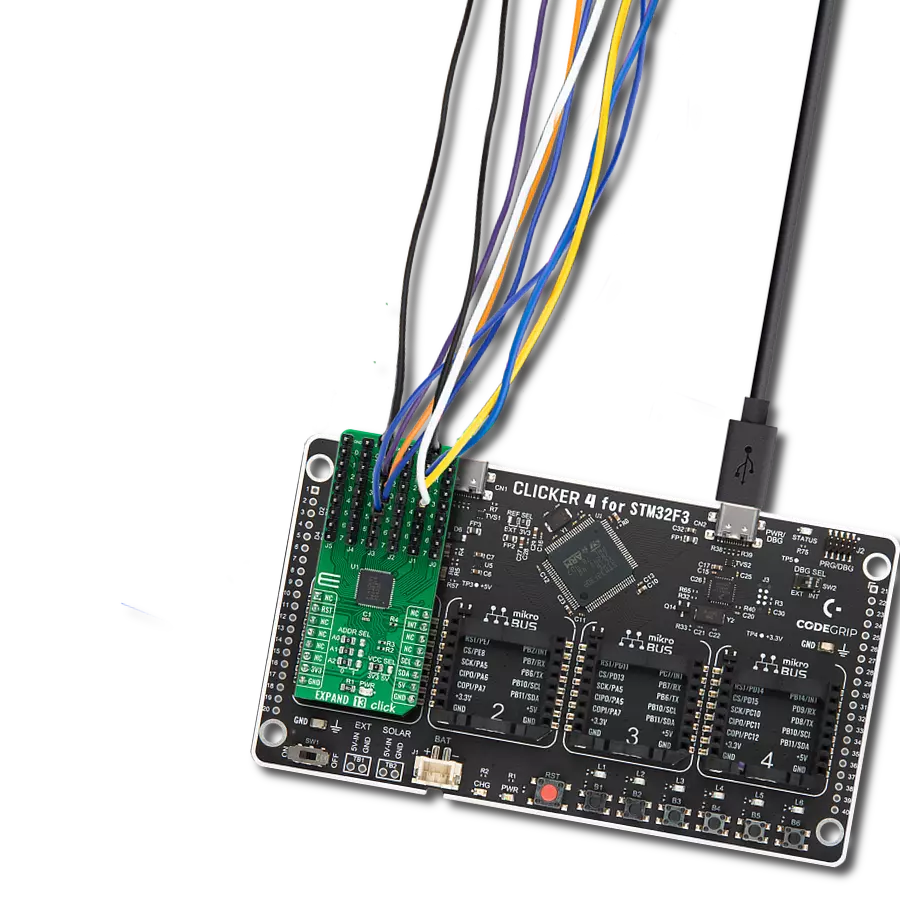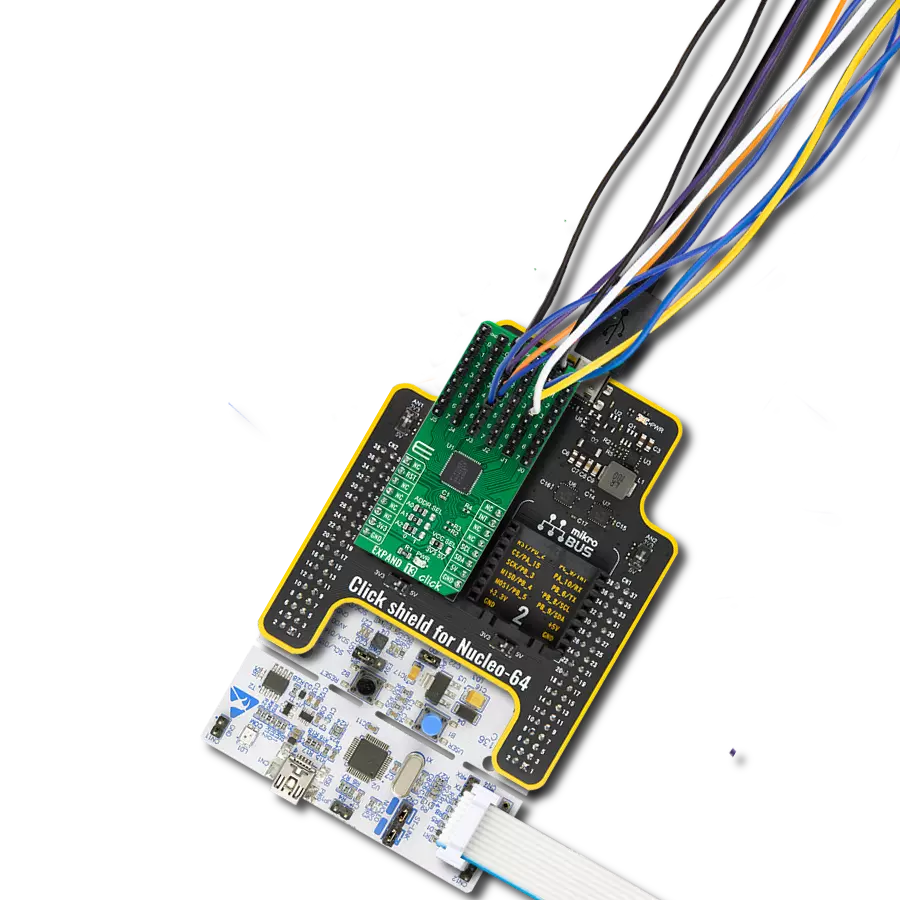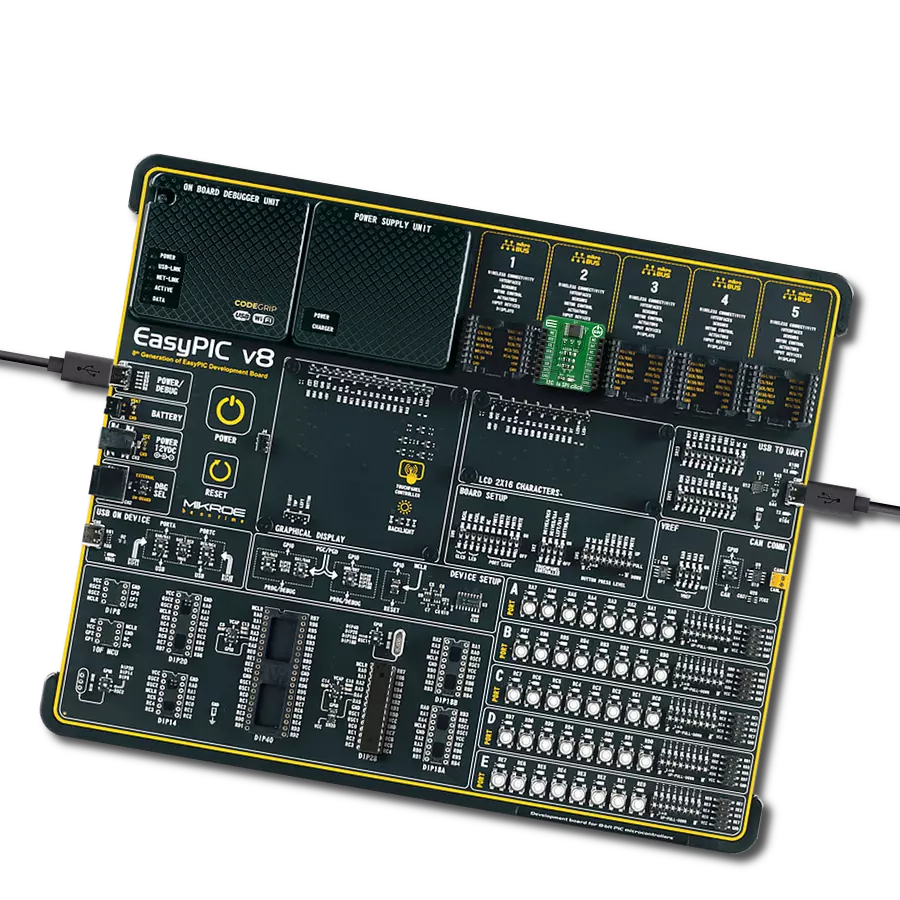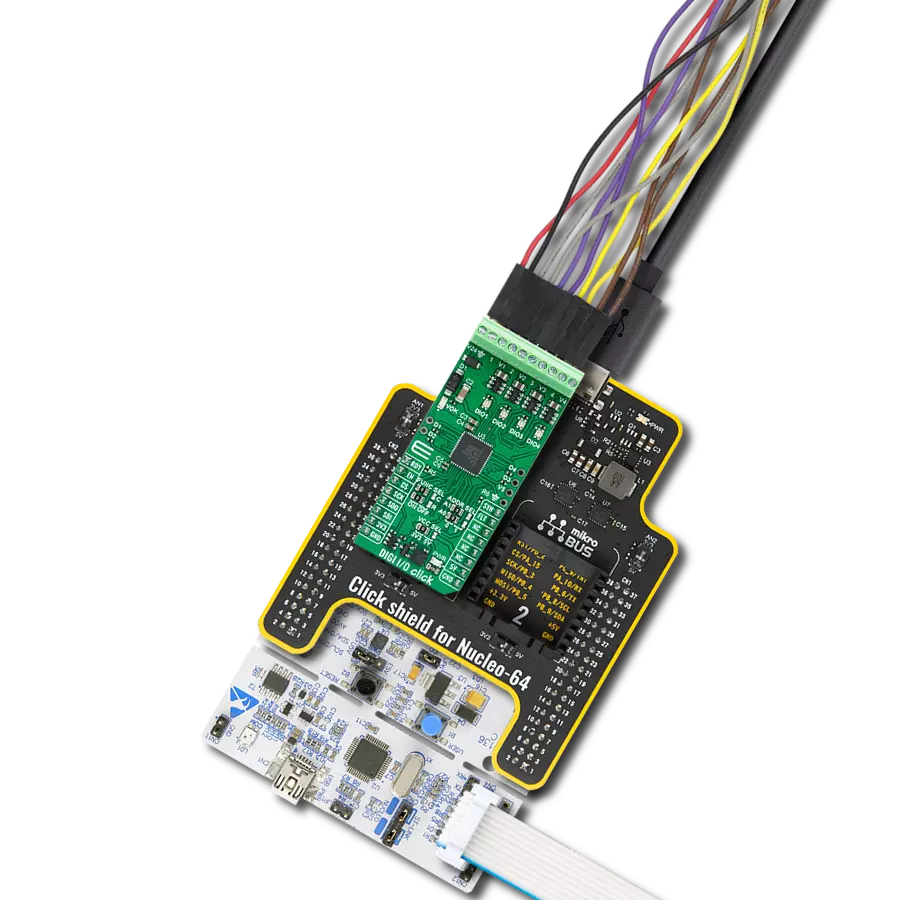Navigate the challenges of limited I/O resources with confidence, as our port expander technology offers real-time pin expansion, precision control, and adaptability for diverse electronic systems
A
A
Hardware Overview
How does it work?
EXPAND 6 Click is based on the CY8C9520A, 20-bit I/O expander with EEPROM, and four independently configurable 8-bit PWM outputs from Infineon. The main blocks of the CY8C9520A include the control unit, PWMs, EEPROM, and I/O ports. The I/O expander's data pins can be independently assigned as inputs, outputs, or PWM outputs and can be configured as open-drain or collector, strong drive (10 mA source, 25 mA sink), resistively pulled up or down, or high impedance which can be selected in the Port Drive Mode register. It operates as two I2C peripheral devices, where the first device is a multi-port I/O expander (single I2C address to access all ports through registers), and the second is a serial EEPROM with 3 Kbyte address space. Configuration and output register settings are storable as the user defaults in a dedicated section
of the EEPROM. If user defaults were stored in EEPROM, they are restored to the ports at the Power-Up sequence. The EEPROM is byte-readable and supports byte-by-byte writing. A pin 3 of Port 2 on this Click board™ can be configured as an EEPROM Write Disable (WD) input that blocks write operations when set high. The configuration registers can also turn off EEPROM operations. EXPAND 6 Click communicates with MCU using the standard I2C 2-Wire interface with a maximum frequency of 100kHz. The CY8C9520A has, by default, two possible I2C slave address formats: the first is used to access the multi-port device, and the second to access the EEPROM. This selection of I2C slave addresses is performed by setting the logic level on the A0 pin of the CY8C9520A, which can be done using the SMD jumper labeled ADDR SEL. It also generates a
programmable interrupt signal routed on the INT pin of the mikroBUS™, which can inform the system master that there is incoming data on its ports or that the PWM output state has changed. The reset signal routed on the RST pin of the mikroBUS™ socket is similar to the POR (Power-ON Reset) function. When the CY8C9520A is held in Reset, all In and Out pins are held at their default High-Z State. This Click board™ can operate with either 3.3V or 5V logic voltage levels selected via the VCC SEL jumper. This way, both 3.3V and 5V capable MCUs can use the communication lines properly. Also, this Click board™ comes equipped with a library containing easy-to-use functions and an example code that can be used as a reference for further development.
Features overview
Development board
PIC18F57Q43 Curiosity Nano evaluation kit is a cutting-edge hardware platform designed to evaluate microcontrollers within the PIC18-Q43 family. Central to its design is the inclusion of the powerful PIC18F57Q43 microcontroller (MCU), offering advanced functionalities and robust performance. Key features of this evaluation kit include a yellow user LED and a responsive
mechanical user switch, providing seamless interaction and testing. The provision for a 32.768kHz crystal footprint ensures precision timing capabilities. With an onboard debugger boasting a green power and status LED, programming and debugging become intuitive and efficient. Further enhancing its utility is the Virtual serial port (CDC) and a debug GPIO channel (DGI
GPIO), offering extensive connectivity options. Powered via USB, this kit boasts an adjustable target voltage feature facilitated by the MIC5353 LDO regulator, ensuring stable operation with an output voltage ranging from 1.8V to 5.1V, with a maximum output current of 500mA, subject to ambient temperature and voltage constraints.
Microcontroller Overview
MCU Card / MCU
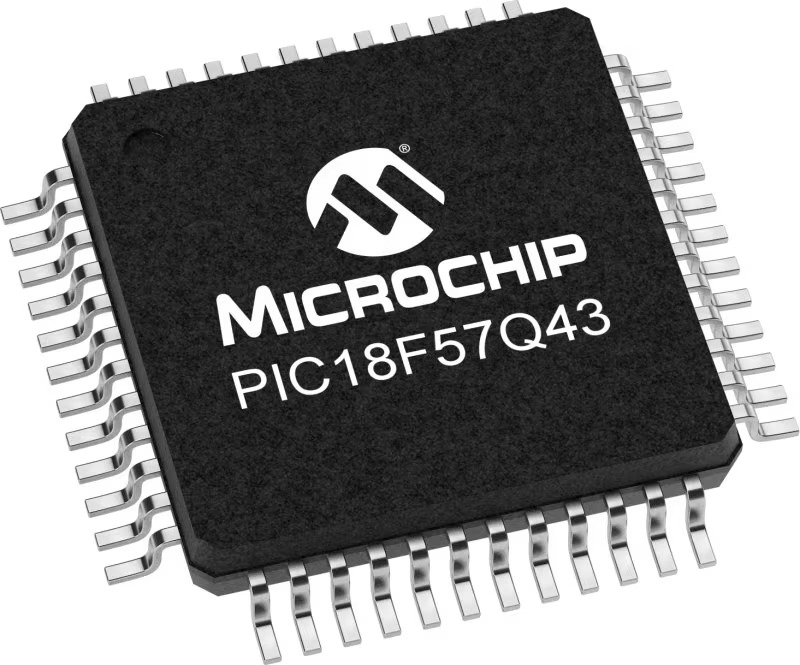
Architecture
PIC
MCU Memory (KB)
128
Silicon Vendor
Microchip
Pin count
48
RAM (Bytes)
8196
You complete me!
Accessories
Curiosity Nano Base for Click boards is a versatile hardware extension platform created to streamline the integration between Curiosity Nano kits and extension boards, tailored explicitly for the mikroBUS™-standardized Click boards and Xplained Pro extension boards. This innovative base board (shield) offers seamless connectivity and expansion possibilities, simplifying experimentation and development. Key features include USB power compatibility from the Curiosity Nano kit, alongside an alternative external power input option for enhanced flexibility. The onboard Li-Ion/LiPo charger and management circuit ensure smooth operation for battery-powered applications, simplifying usage and management. Moreover, the base incorporates a fixed 3.3V PSU dedicated to target and mikroBUS™ power rails, alongside a fixed 5.0V boost converter catering to 5V power rails of mikroBUS™ sockets, providing stable power delivery for various connected devices.
Used MCU Pins
mikroBUS™ mapper
Take a closer look
Click board™ Schematic

Step by step
Project assembly
Track your results in real time
Application Output
1. Application Output - In Debug mode, the 'Application Output' window enables real-time data monitoring, offering direct insight into execution results. Ensure proper data display by configuring the environment correctly using the provided tutorial.

2. UART Terminal - Use the UART Terminal to monitor data transmission via a USB to UART converter, allowing direct communication between the Click board™ and your development system. Configure the baud rate and other serial settings according to your project's requirements to ensure proper functionality. For step-by-step setup instructions, refer to the provided tutorial.

3. Plot Output - The Plot feature offers a powerful way to visualize real-time sensor data, enabling trend analysis, debugging, and comparison of multiple data points. To set it up correctly, follow the provided tutorial, which includes a step-by-step example of using the Plot feature to display Click board™ readings. To use the Plot feature in your code, use the function: plot(*insert_graph_name*, variable_name);. This is a general format, and it is up to the user to replace 'insert_graph_name' with the actual graph name and 'variable_name' with the parameter to be displayed.

Software Support
Library Description
This library contains API for EXPAND 6 Click driver.
Key functions:
expand6_write_port- Set all OUTPUT pins' logic levels in one port functionexpand6_reset- Reset functionexpand6_write_pin- Set a single OUTPUT pin's logic level function
Open Source
Code example
The complete application code and a ready-to-use project are available through the NECTO Studio Package Manager for direct installation in the NECTO Studio. The application code can also be found on the MIKROE GitHub account.
/*!
* \file
* \brief Expand6 Click example
*
* # Description
* This example demonstrates the use of EXPAND 6 Click board.
*
* The demo application is composed of two sections :
*
* ## Application Init
* Initalizes I2C driver and makes an initial log.
*
* ## Application Task
* This example shows the capabilities of the EXPAND 6 Click by toggling
* each of the 20 available pins.
*
* \author MikroE Team
*
*/
// ------------------------------------------------------------------- INCLUDES
#include "board.h"
#include "log.h"
#include "expand6.h"
// ------------------------------------------------------------------ VARIABLES
static expand6_t expand6;
static log_t logger;
uint8_t pin_num;
// ------------------------------------------------------ APPLICATION FUNCTIONS
void application_init ( void )
{
log_cfg_t log_cfg;
expand6_cfg_t cfg;
/**
* Logger initialization.
* Default baud rate: 115200
* Default log level: LOG_LEVEL_DEBUG
* @note If USB_UART_RX and USB_UART_TX
* are defined as HAL_PIN_NC, you will
* need to define them manually for log to work.
* See @b LOG_MAP_USB_UART macro definition for detailed explanation.
*/
LOG_MAP_USB_UART( log_cfg );
log_init( &logger, &log_cfg );
log_info( &logger, "---- Application Init ----" );
// Click initialization.
expand6_cfg_setup( &cfg );
EXPAND6_MAP_MIKROBUS( cfg, MIKROBUS_1 );
expand6_init( &expand6, &cfg );
expand6_reset ( &expand6 );
Delay_ms ( 1000 );
log_printf( &logger, "------------------- \r\n" );
log_printf( &logger, " EXPAND 6 Click \r\n" );
log_printf( &logger, "------------------- \r\n" );
}
void application_task ( void )
{
expand6_write_port( &expand6, EXPAND6_PORT_0, 0xFF );
expand6_write_port( &expand6, EXPAND6_PORT_1, 0xFF );
expand6_write_port( &expand6, EXPAND6_PORT_2, 0xFF );
log_printf( &logger, "All pins set to HIGH logic level!\r\n" );
log_printf( &logger, "---------------------------------\r\n" );
Delay_ms ( 1000 );
Delay_ms ( 1000 );
for ( pin_num = 0; pin_num < 20; pin_num++ )
{
expand6_write_pin( &expand6, pin_num, EXPAND6_LOW );
log_printf( &logger, "Pin %u is set to LOW logic level!\r\n", ( uint16_t) pin_num );
Delay_ms ( 300 );
}
log_printf( &logger, "---------------------------------\r\n" );
Delay_ms ( 1000 );
}
int main ( void )
{
/* Do not remove this line or clock might not be set correctly. */
#ifdef PREINIT_SUPPORTED
preinit();
#endif
application_init( );
for ( ; ; )
{
application_task( );
}
return 0;
}
// ------------------------------------------------------------------------ END
Additional Support
Resources
Category:Port expander






















